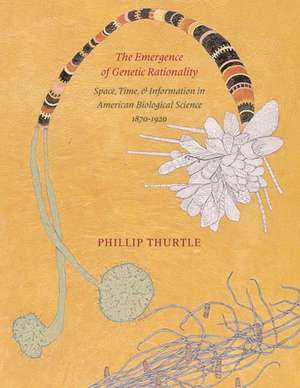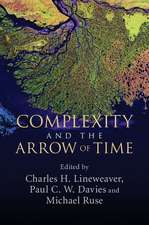The Emergence of Genetic Rationality – Space, Time, and Information in American Biological Science, 1870–1920: In Vivo: The Cultural Mediations of Biomedical Science
Autor Phillip Thurtleen Limba Engleză Hardback – 19 dec 2007
The rise of managerial capitalism brought with it an array of homologous practices, all of which transformed the social fabric. With transformations in political economy and new technologies came new conceptions of biology, and it is in the relationships of social class to breeding practices, of middle managers to biological information processing, and of transportation to experiences of space and time, that we can begin to locate the conditions that made genetic thinking possible, desirable, and seemingly natural.
In describing this historical moment, "The Emergence of Genetic Rationality" is panoramic in scope, addressing primary texts that range from horse breeding manuals to eugenics treatises, natural history tables to railway surveys, and novels to personal diaries. It draws on the work of figures as diverse as Thorstein Veblen, Jack London, Edith Wharton, William James, and Luther Burbank. The central figure, David Starr Jordan - naturalist, poet, eugenicist, educator - provides the book with a touchstone for deciphering the mode of rationality that genetics superseded.
Building on continental philosophy, media studies, systems theory, and theories of narrative, "The Emergence of Genetic Rationality" provides an inter-disciplinary contribution to intellectual and scientific history, science studies, and cultural studies. It offers a truly encyclopedic cultural history that challenges our own ways of organizing knowledge even as it explicates those of an earlier era. In a time in which genetic rationality has become our own common sense, this discussion of its emergence reminds us of the interdependence of the tools we use to process information and the conceptions of life they animate.
| Toate formatele și edițiile | Preț | Express |
|---|---|---|
| Paperback (1) | 271.70 lei 6-8 săpt. | |
| University of Washington Press – 30 noi 2007 | 271.70 lei 6-8 săpt. | |
| Hardback (1) | 654.21 lei 6-8 săpt. | |
| MV – University of Washington Press – 19 dec 2007 | 654.21 lei 6-8 săpt. |
Preț: 654.21 lei
Preț vechi: 849.63 lei
-23% Nou
125.21€ • 130.21$ • 104.78£
Carte tipărită la comandă
Livrare economică 15-29 martie
Specificații
ISBN-10: 0295987561
Pagini: 396
Ilustrații: 16 illustrations
Dimensiuni: 178 x 229 x 15 mm
Greutate: 0.77 kg
Editura: MV – University of Washington Press
Seria In Vivo: The Cultural Mediations of Biomedical Science
Recenzii
Notă biografică
Descriere
Cuprins
Acknowledgments
Introduction
I. Harnessing Heredity: Middle Class Mores and Information Management in Large-Scale Breeding
Prelude
1. Middle Class Mores: Beaufort's Bastards
2. Breeding True: Processing a New Elite
Conclusion
-"A Backward Glance": Corporate Inheritance as Bastard Birth
II. Fish-Market Phenomenology: The Habits of Thought and the Space of Exchange in Late Nineteenth-Century Natural History
Prelude
3. The Political Economy of Natural History
4. Homologous Networks of Exchange: The Intersubjective Infrastructure of Scientific Exchange
5. Categorizing Experience: Space and Time in Nineteenth-Century Natural History
6. The Pacific Railway Survey: The Subject in the Panoramic Mode
III. History Writing Great Men Writing History: Recapitulation Narratives and Stories as Scientific Models
Prelude
7. Storied Pasts
8. The Plot Thickens: The Political Economic Dimensions of Biological Stories
Conclusion
-Osborn and the Horse: The Conservative Literary Inheritance of Evolutionary Stories
IV. The Poetics of Wandering: Time, Narrative, and the Affective/Phenomenological Body
Prelude
9. Wandering and Narrative
10. Wandering and Inheritance in Light of the Sensory-Motor Complex
11. Writing, Goods, and Memory
Conclusion
-New Folds in Space and Time
V. Hybrid Space, Hybrid Time: Record Keeping and the Indexing of Genomic Space and Time
Prelude
12. Industrial Perspectives: Luther Burbank
13. Record Keeping: A Post-Hermeneutic Means for Charting the Space of Flows
Conclusion
The Different Domains of Life
Notes
Bibliography
Index




















